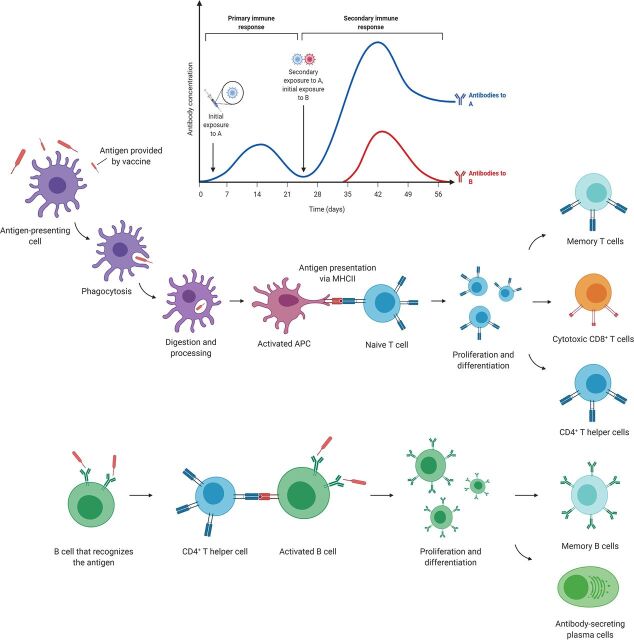FIG 1.
Mechanisms of classical vaccines. Inactivated pathogens contained in classical vaccines are phagocytosed by antigen-presenting cells (APC) and presented to naive T cells in the lymph nodes. Antigen presentation triggers the activation and proliferation of T cells and their differentiation into different subsets, namely, CD4+ helper T cells, CD8+ cytotoxic T cells, and a group of memory T cells, which will persist in the circulation and the tissues for a long time and will confer immunological memory after exposure to the same pathogen. For their part, B cells get activated after direct recognition of the pathogen and contact with a CD4+ helper T cell that was previously activated by an APC. This specific B cell will undergo clonal expansion and give rise to plasma cells, which produce large amounts of specific antibodies against the antigen contained in the vaccine, and long-lasting memory B cells.

